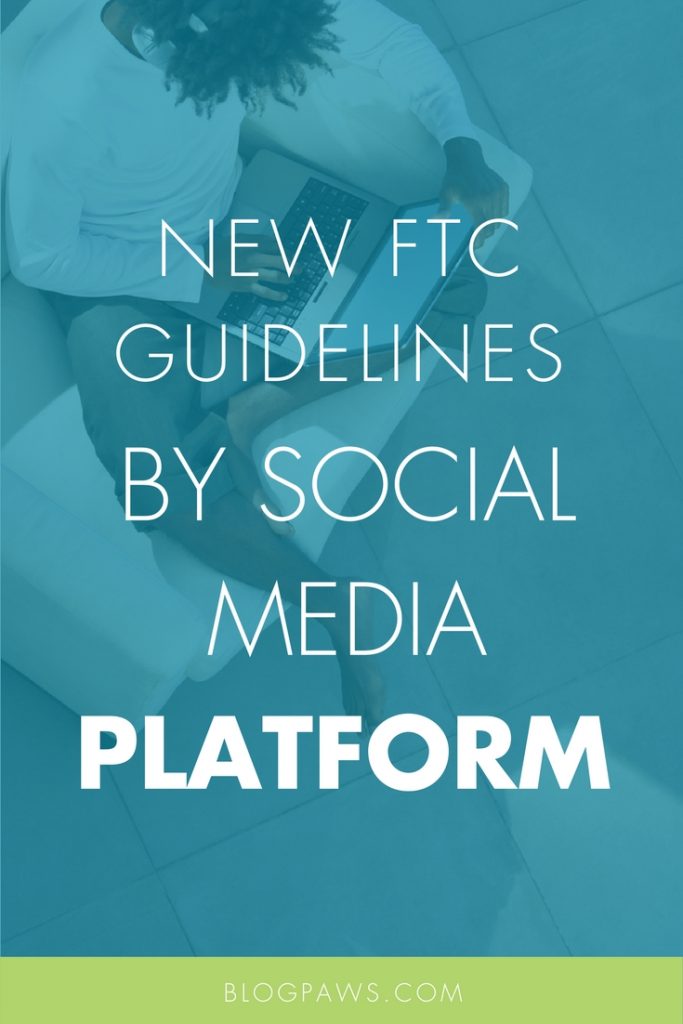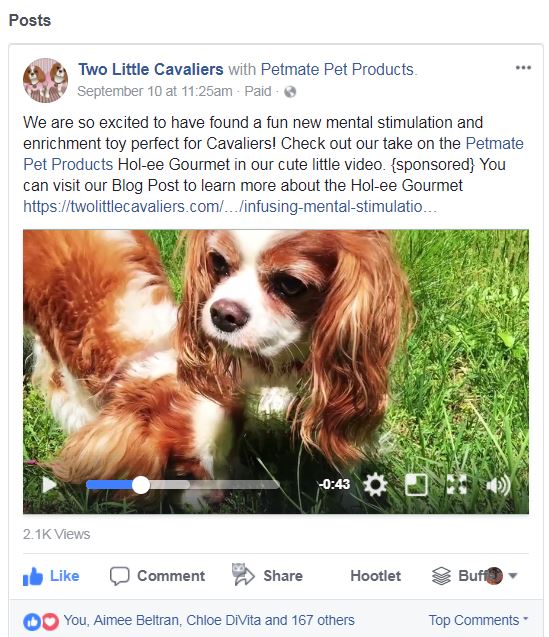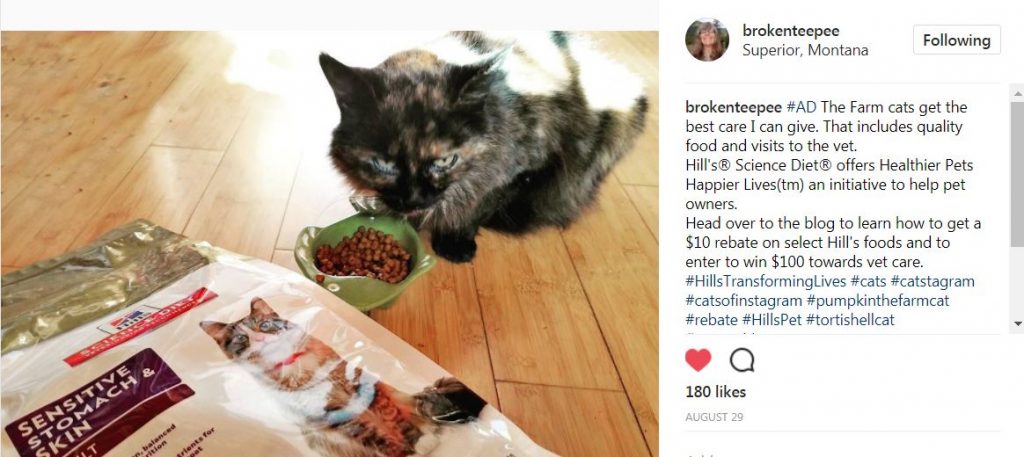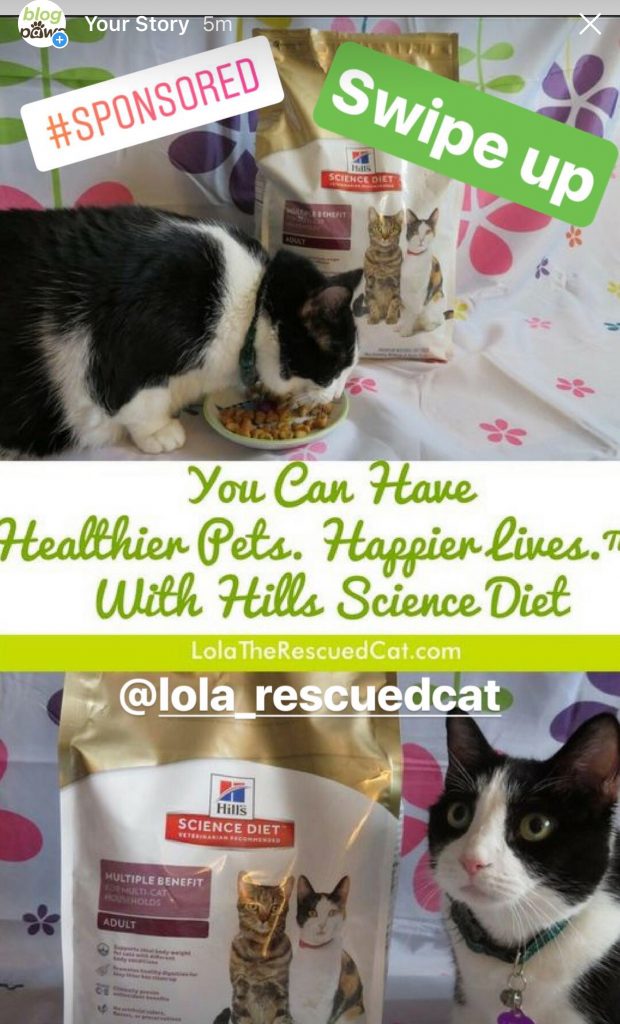New FTC Guidelines by Social Media Platform
There has been a lot of chatter about the FTC guidelines lately, their roll out of new rules, and their recent Twitter chat. Here at BlogPaws, we are all about education, so, of course, we have the latest insights on what this means for bloggers and influencers. How do we stay on top of things to ensure that we are serving our sponsors in the most professional manner possible?
In this exclusive interview with BlogPaws’ Director of Influencer Marketing Felissa Elfenbein, she shares what you need to know to keep the FTC happy, stay compliant, and keep your online presence in proper form.

In Her Own Words
First, I want to reassure you that most of the new FTC Guidelines are truthfully helping to make the “already in place guidelines” less vague while also including updates for social channels that have introduced new functions. Social media changes, grows, and adapts at breakneck speed, which makes it hard for any agency or organization to keep up to ensure information is shared as quickly as possible.
Bottom line: If in doubt, disclose the relationship! By doing so, you are protecting yourself and the brands, agencies, and networks with which you work. You are also showing other potential sponsors that you care and want to make sure that you are following FTC Guidelines. It truly does matter to your sponsors that you know the right way of doing things when it comes to the FTC.
It appears that Facebook rolled out the handshake tool literally overnight and told everyone that they needed to start using it. Just like that!
Unfortunately, it appears that Facebook did not have a conversation with the FTC before rolling out the handshake tool, which means it is not a stand-alone thing. You still need to use the words ad or sponsored in the copy of your text. You no longer have to use the hashtag, but you need to ensure that the fact that the post is sponsored stands out to the average visitor to your page. The FTC says whatever you do, you cannot bury the fact that the post is sponsored. So, if you share long-form information you need to make sure that your disclosure can be seen without clicking the more link. Here’s an example from Two Little Cavaliers’ Facebook page (which belongs to Felissa):

This is the one social media platform where things have not changed much. That being said, the FTC wants to make sure that anyone who sees a sponsored tweet understands that it is, indeed, sponsored. That means you shouldn’t mix it up with other hashtags and that it should be in a place where it is obvious. #Ad and #Sponsored both satisfy the guidelines on this channel. New best practices say that it should appear before your link or any other hashtag, but as long as your disclosure stands out that is fine. Here’s an example from @BigDogMom on Twitter:

Instagram is owned by Facebook, and it appears they are following Facebook’s lead with the handshake tool. Felissa says that Instagram did not consult with the FTC and their handshake tool, which has been rolling out to business accounts slowly over the past few months. Well, it seems it does not comply with FTC Guidelines either!
If you have the handshake tool on Instagram, you should be using it to tag the brand with which you are working. If you don’t have the handshake tool, you will get it eventually, so need to panic. For Instagram, the FTC is very clear about what constitutes a proper disclosure. Your disclosure MUST appear within the first 90 characters or three lines of text. This places it before the break where someone would need to click to read more. Best practices says to use #ad and to ensure that your disclosure is not placed between other hashtags so that it stands out to your followers or anyone that happens upon the content. Here is an example from Broken Teepee on Instagram:

Instagram Stories
The IG Stories platform possess a very unique challenge. There is no place within a story to write content, meaning it needs its own guidelines. For Instagram stories, you must disclose on the image itself and the disclosure must stand out from the image and any other text you might include.
Felissa says to consider placing black text on a white background or white text on a black background. You can also use a font or color that really stand out against your image. Be cautious of using an image that is cluttered, as your disclosure might blend into the background. The FTC says that you do not have to disclose on every image, but you need to use your judgement in determining best practice for the situation. If you are uploading several images or videos quickly so that they all disappear at almost the exact same time, you should be safe. If, however, you are doing a day-in-the-life story or uploading images and pictures over the course of time, you should disclose on each image. This is from the BlogPaws IG Live feed with sponsored content from Cook with 5 Kids and Lola the Rescued Cat:


Instagram Live / Facebook Live
When going live on either of these two platforms, the FTC cautions that it is not enough to just disclose at the very beginning of your live. You should speak the words and have them written in a fashion that your disclosure appears continuously so that no matter when someone joins the broadcast, they understand that this is sponsored content.
YouTube
Felissa says, “While I am calling this guideline out for YouTube, this rule actually covers any non-live video that you upload to a social channel. For this platform, you need to both speak your disclosure as well as show the words. You also need to include your disclosure in the information about the video. Your spoken and written disclosure MUST appear at the very beginning of the video. Common practice is that most people watch YouTube videos with the sound up, which is why your spoken words are so important. We know that most people tend to watch Facebook Videos with the sound off, so in this case your written disclosure needs to be super solid. This probably also holds true for Instagram, but right now I think this is more an even split at least for the moment.”
The words you use to disclose must make it obvious you were compensated in some fashion. Compensation is considered anything that is not available to the average consumer. That means if you received something because you are an influencer, whether there was any expectation of compensation, you must disclose that you received the product and therefore have a relationship with the brand.
Don’t Stop Now
For more insider tips, a deeper discussion, and pro tips when it comes to FTC Guidelines, check out the replay of our Facebook Live in our Social Learning Community (SLC) on Facebook. If you aren’t already a member, simply apply for the SLC Facebook group, answer the questions that pop up, and we’ll process your membership right away.
Read more: 3 Key Takeaways from the FTC’s Twitter Chat about Disclosures
Images: sirtravelalot / hedgehog94 / Shutterstock.




